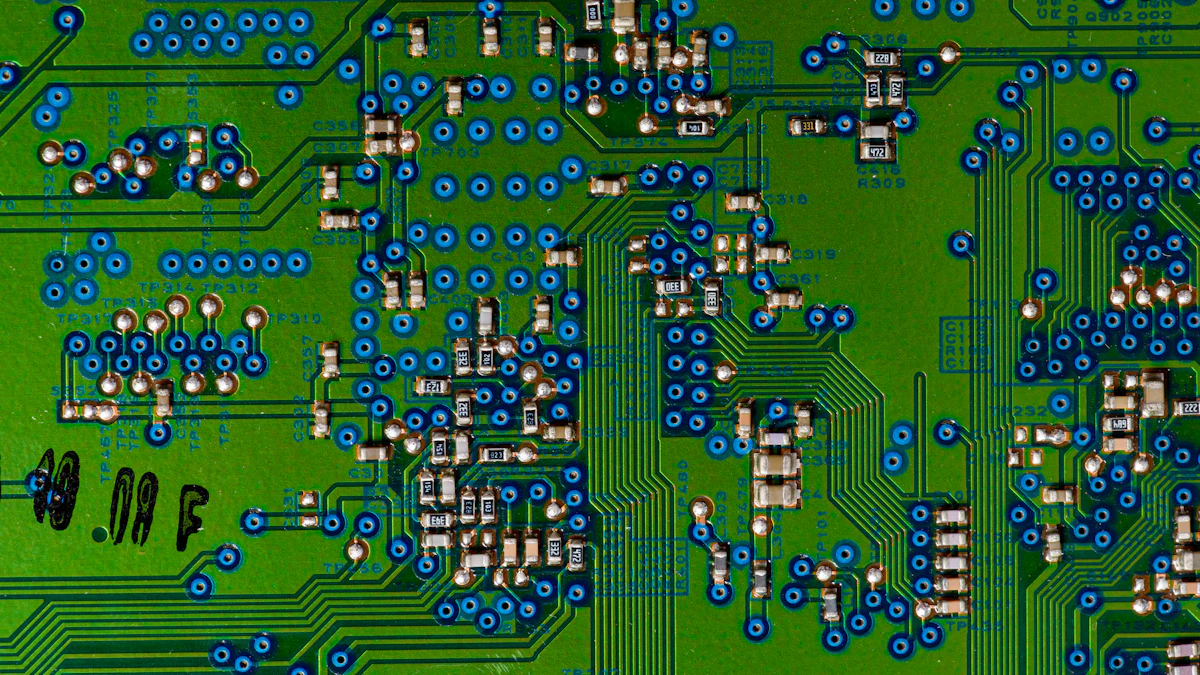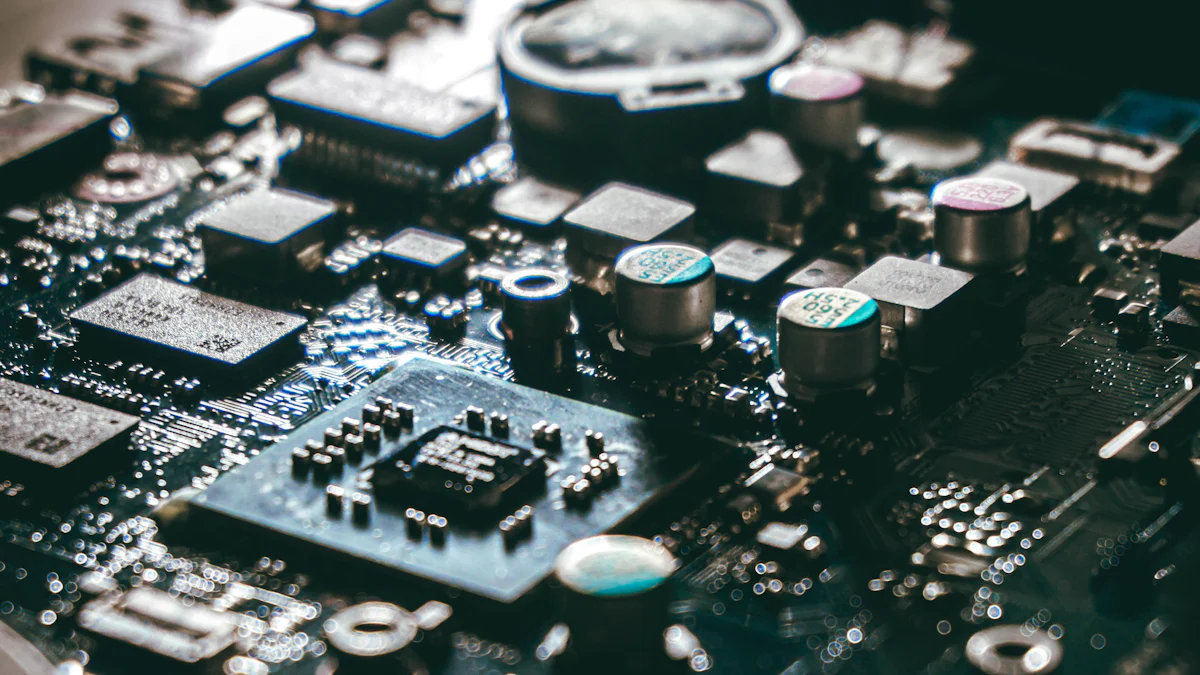Wafer susceptor technology plays a pivotal role in semiconductor manufacturing. It ensures precise thermal management, enabling uniform heat distribution during critical processes. Innovations in this field address challenges such as improving efficiency and achieving higher precision in production. The demand for advanced wafer susceptors continues to rise due to trends like miniaturization and the adoption of 3D chip architectures. These advancements drive the industry toward creating smaller, faster, and more reliable electronic devices.
Key Takeaways
- Wafer susceptors are essential for precise thermal management in semiconductor manufacturing, ensuring uniform heat distribution for high-quality production.
- Innovations in materials, such as advanced ceramics and specialized coatings, enhance the durability and performance of wafer susceptors, leading to longer lifespans and reduced contamination risks.
- Design improvements and the integration of sensors allow for real-time monitoring, optimizing manufacturing processes and ensuring consistent quality in semiconductor devices.
- The competitive landscape is shaped by major players investing in R&D, while startups introduce disruptive technologies that challenge traditional methods and enhance efficiency.
- Collaboration between semiconductor manufacturers and material science companies drives innovation, resulting in advanced solutions that meet the evolving demands of the industry.
- Future advancements will likely focus on developing new materials and manufacturing techniques, ensuring wafer susceptors continue to support the production of next-generation electronic devices.
Recent Advancements in Wafer Susceptor Technology

Innovations in Materials
Advancements in materials have significantly improved the performance of wafer susceptors. Manufacturers now utilize advanced ceramics and composite materials to enhance thermal conductivity and durability. These materials withstand extreme temperatures, ensuring consistent performance during high-temperature semiconductor processes. Their robustness reduces wear and tear, extending the lifespan of the susceptor.
Specialized coatings have also emerged as a critical innovation. These coatings improve chemical resistance, protecting the susceptor from corrosive environments. They minimize contamination risks, which is essential for maintaining the purity of wafers during manufacturing. By reducing particle generation, these coatings contribute to higher yields and better-quality semiconductor devices.
Design and Functional Enhancements
Design improvements have optimized the functionality of wafer susceptors. Engineers have developed geometries that ensure uniform heat distribution across the wafer surface. This uniformity eliminates temperature variations, which can lead to defects in semiconductor layers. The precise control of heat enhances the reliability of the manufacturing process.
The integration of sensors represents another breakthrough. These sensors enable real-time monitoring of temperature and other critical parameters. By providing instant feedback, they allow manufacturers to optimize processes and maintain consistent quality. This innovation supports the production of increasingly complex semiconductor devices with tighter tolerances.
Applications in Semiconductor Processes
Wafer susceptors play a vital role in advanced semiconductor processes. In atomic layer deposition (ALD) and epitaxy, they ensure precise thermal control, which is crucial for creating ultra-thin and uniform layers. These processes demand high accuracy, and wafer susceptors meet these requirements by delivering stable and consistent performance.
Their contributions extend to the production of next-generation chips and devices. As the industry moves toward smaller and more powerful components, wafer susceptors enable the fabrication of intricate structures. They support the development of 3D chip architectures and other cutting-edge technologies, driving innovation in electronics.
Patent Trends in Wafer Susceptor Technology
Key Areas of Innovation
Recent patents highlight significant advancements in wafer susceptor technology. Material innovations have taken center stage, with researchers focusing on improving thermal stability and chemical resistance. These advancements ensure that susceptors perform reliably under extreme conditions, which is critical for semiconductor manufacturing. Process integration has also emerged as a key area of innovation. Patents now emphasize the seamless incorporation of susceptors into advanced manufacturing systems, enhancing efficiency and precision.
One notable example is patent US20060065196A1. This patent introduces a susceptor designed to homogenize the epitaxial layer of a wafer. By ensuring uniformity, it addresses a major challenge in wafer processing. Such innovations not only improve production quality but also reduce defects, which is essential for creating next-generation semiconductor devices.
Geographic Distribution of Patents
The global patent landscape for wafer susceptor technology reveals interesting trends. Countries like the United States, Japan, and South Korea lead in patent filings. These nations invest heavily in research and development, driving innovation in the semiconductor industry. Their focus on advanced materials and manufacturing techniques has positioned them as leaders in this field.
Regional trends also shape the market. In Europe, collaborative efforts between research institutions and private companies have resulted in groundbreaking technologies. Meanwhile, Asian countries prioritize high-volume production, leveraging their expertise in scaling up manufacturing processes. These regional dynamics influence the direction of innovation and competition in the global market.
Collaborations and Partnerships
Collaborations play a crucial role in advancing wafer susceptor technology. Semiconductor manufacturers often partner with material science companies to develop cutting-edge solutions. These joint ventures combine expertise from both fields, resulting in products that meet the industry's evolving demands. For instance, partnerships have led to the creation of susceptors with enhanced durability and performance.
Research institutions also contribute significantly to innovation. Universities and laboratories conduct studies that explore new materials and designs. Their findings often serve as the foundation for commercial applications. By fostering collaboration between academia and industry, these institutions help accelerate the development of advanced wafer susceptor technologies.
Competitive Analysis of the Wafer Susceptor Market

Major Players and Their Strategies
Key companies dominate the wafer susceptor market by leveraging extensive research and development (R&D) investments. Showa Denko, a prominent player, allocates significant resources to innovate and refine its product offerings. This focus on R&D enables the company to maintain a competitive edge by introducing advanced susceptors with improved performance and durability.
Market leaders adopt strategic approaches to sustain their positions. Acquisitions allow these companies to expand their technological capabilities and market reach. Partnerships with material science firms and semiconductor manufacturers further enhance their ability to meet evolving industry demands. These collaborations foster the development of cutting-edge solutions, ensuring that established players remain at the forefront of innovation.
Challenges in the Industry
The wafer susceptor industry faces several challenges that require careful navigation. Balancing cost pressures with the need for high-quality and reliable products remains a critical concern. Manufacturers must optimize production processes to reduce expenses while maintaining the performance standards demanded by semiconductor applications.
Supply chain disruptions and material shortages present additional hurdles. The reliance on specialized materials, such as advanced ceramics and coatings, makes the industry vulnerable to fluctuations in supply. Companies must implement robust strategies to mitigate these risks, ensuring consistent production and delivery of wafer susceptors to their clients.
Emerging Players and Disruptive Technologies
Startups are entering the wafer susceptor market with innovative designs and materials. These emerging players challenge established companies by introducing novel solutions that address specific industry pain points. Their contributions often focus on enhancing thermal conductivity, chemical resistance, and overall efficiency.
Disruptive technologies have the potential to reshape the competitive landscape. Advanced manufacturing techniques, such as additive manufacturing, enable the creation of complex susceptor geometries with unprecedented precision. These innovations could disrupt traditional production methods, forcing established players to adapt or risk losing market share. The impact of these technologies underscores the importance of continuous innovation in maintaining a competitive advantage.
Innovations in wafer susceptor technology have transformed semiconductor manufacturing by enhancing efficiency, precision, and scalability. These advancements enable the production of smaller, faster, and more reliable electronic devices. The evolving patent landscape highlights the competitive nature of this field, with key players leveraging intellectual property to drive innovation and collaboration. Future breakthroughs will likely focus on advanced materials, improved designs, and disruptive manufacturing techniques. As the industry progresses, wafer susceptors will remain critical to meeting the demands of next-generation semiconductor technologies.
FAQ
What is a wafer susceptor?
A wafer susceptor is a critical component in semiconductor manufacturing. It holds and supports wafers during processes like chemical vapor deposition (CVD) and epitaxy. Its primary function involves ensuring uniform heat distribution and maintaining precise thermal control to achieve high-quality semiconductor layers.
Why are advanced materials important for wafer susceptors?
Advanced materials enhance the performance and durability of wafer susceptors. Materials like ceramics and composites improve thermal conductivity and withstand extreme temperatures. These properties ensure consistent performance, reduce wear and tear, and extend the lifespan of the susceptor.
How do specialized coatings benefit wafer susceptors?
Specialized coatings provide chemical resistance and minimize contamination risks. They protect susceptors from corrosive environments and reduce particle generation. This ensures wafer purity, leading to higher yields and better-quality semiconductor devices.
What role do sensors play in wafer susceptor technology?
Sensors integrated into wafer susceptors enable real-time monitoring of critical parameters like temperature. They provide instant feedback, allowing manufacturers to optimize processes and maintain consistent quality. This innovation supports the production of complex semiconductor devices with tighter tolerances.
How do wafer susceptors contribute to advanced semiconductor processes?
Wafer susceptors ensure precise thermal control in processes like atomic layer deposition (ALD) and epitaxy. These processes require high accuracy to create ultra-thin and uniform layers. Susceptors play a vital role in achieving the precision needed for next-generation chips and devices.
Which companies lead the wafer susceptor market?
Major players like Showa Denko dominate the wafer susceptor market. These companies invest heavily in research and development to introduce advanced susceptors. Their strategies include acquisitions and partnerships to maintain market leadership and meet evolving industry demands.
What challenges does the wafer susceptor industry face?
The industry faces challenges such as balancing cost pressures with quality requirements. Supply chain disruptions and material shortages also pose significant hurdles. Manufacturers must adopt strategies to mitigate these risks and ensure consistent production.
How are startups influencing wafer susceptor technology?
Startups bring innovative designs and materials to the wafer susceptor market. They address specific industry pain points by introducing solutions that enhance thermal conductivity, chemical resistance, and efficiency. These emerging players challenge established companies and drive competition.
What are some notable patents in wafer susceptor technology?
Patent US20060065196A1 stands out for its contribution to wafer processing. It introduces a susceptor designed to homogenize the epitaxial layer of a wafer, addressing a major challenge in semiconductor manufacturing. Such patents highlight advancements in material and process integration.
What trends shape the future of wafer susceptor technology?
Future trends focus on advanced materials, improved designs, and disruptive manufacturing techniques like additive manufacturing. These innovations aim to enhance efficiency, precision, and scalability. The evolving patent landscape and collaborations will continue to drive progress in this field.
